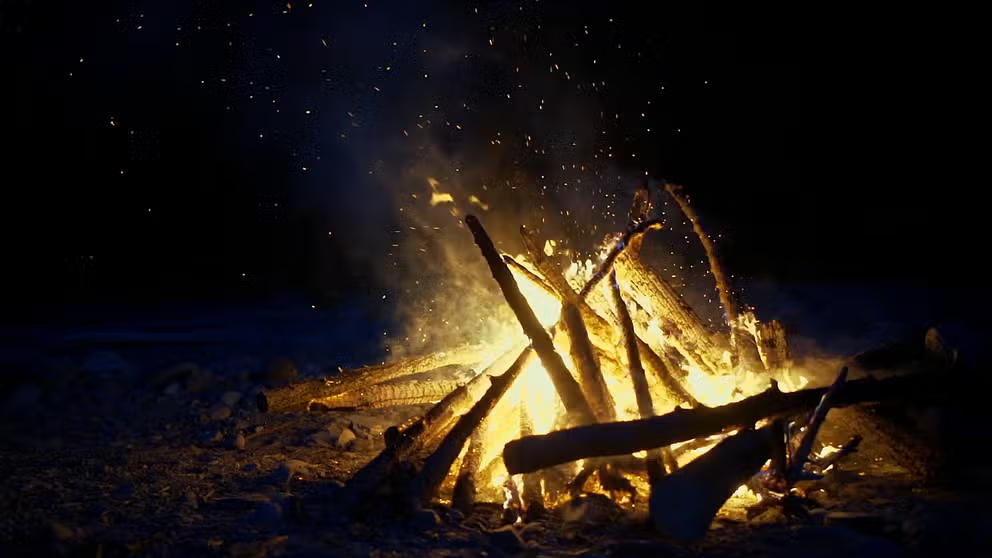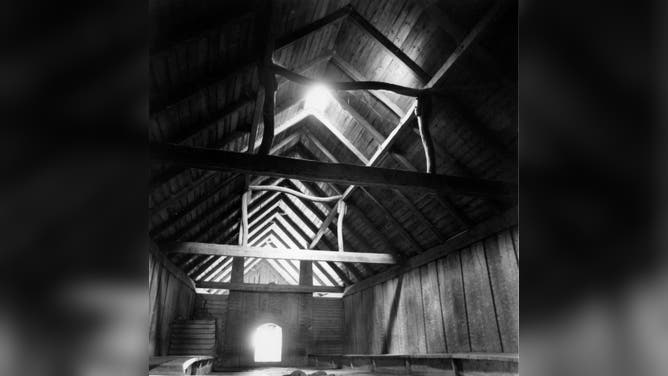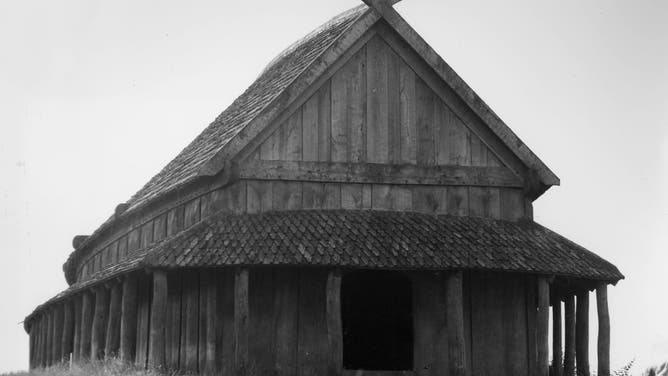How the Yule log tradition evolved from an ancient Viking ritual
Yule logs today come in the form of cakes and hours-long videos. Traditionally, however, the logs fueled fires that celebrated winter, family and the coming of longer, sunnier days.
How the Yule log tradition evolved from an ancient Viking ritual
The burning of a Yule log is a beloved Christmas tradition today, but its origins trace back to ancient pagan celebrations of the winter solstice.
Yule logs can mean different things for different people. For some, yule logs mean warm, crackling fireplaces. For others, they bring to mind sweet, chocolate cakes.
Either way, the Christmas icon in modern times may echo a tradition from as far back as ancient times, particularly in a changing medieval Scandinavia.
Popularly known as the home of the Vikings, this region in northern Europe experienced a significant shift in its culture beginning in the 11th century — a shift involving a mixture of religion and long winter nights, all curiously represented in the unsuspecting yule log.
The long winter night

A Viking re-enactor stands in the foreground as a fire burns behind him.
(Danny Lawson - PA Images / PA Images / Getty Images)
"The word ‘yule’ really is our understanding of the word ‘winter’ in Old Norse," said Heidi Sherman, associate professor of medieval history at the University of Wisconsin-Green Bay and curator of UWGB’s Viking House.
According to Sherman, Old Norse was the ancient language spoken by the Vikings and their fellow Norsemen in Iceland, Denmark, Sweden and Norway.
They celebrated a holiday known as the Yule, or Winter Festival.

A reindeer stands alert on a snowy winter's day in Scandinavia.
(Jonathan Nackstrand / AFP / Getty Images)
"It really centers around the winter solstice, which of course, is the longest night of the year," Sherman said. "It's also celebrating the coming of the light because, after the winter solstice, the days get longer and longer and longer."
"The winter solstice is really sacred because it's celebrating the quiet of winter, but also the excitement of celebrating the sun," Sherman added.
HOW MIDSOMMAR CELEBRATES THE SUN AND KEEPS SWEDISH TRADITIONS ALIVE
This cusp between darkness and light was of particular importance to the people of Scandinavia. Due to their northern location, they may have experienced as few as four or five hours of daylight leading up to the winter solstice.
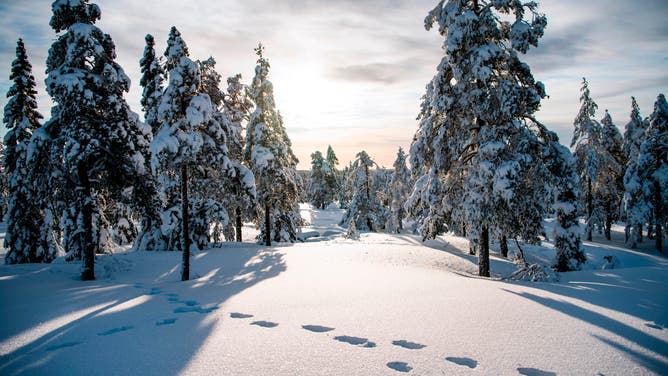
A winter sunset behind a snow covered forest in Sweden.
(Jonathan NACKSTRAND / AFP / Getty Images)
As part of their winter Yule Festival, the early Scandinavians would gather around a fire.
"They would light this giant log, and everybody would sit around telling stories and feasting and sharing together," Sherman said. "And then every morning, they would relight it again if it had gone out, and then for 12 days until the new year, they would continue the burning and the celebrating and the feasting."
The burning wood was often made of oak and would have been carefully selected, according to Sherman. It may have also had carved images, such as those of Norse gods.
This fiery focal point was called the yule log.
Yuletides
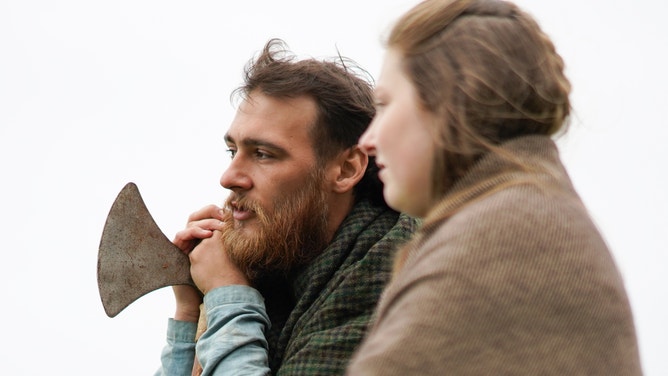
Two Viking re-enactors conversing with one another.
(Ian Forsyth / Getty Images)
While the long night of Yule Festival cued the beginning of longer days, it also meant time with family on Viking farmsteads.
"The core of that farmstead would be your immediate family," Sherman said. "Most of the time they're probably very busy working, and yuletide would have been a celebration of the time away from that work — and I think that's how we also look forward to Christmas, as well."
FROM BONES TO BLADES: HOW ICE SKATING ORIGINATED FROM SCANDINAVIA
According to Sherman, another aspect of yuletide was telling stories.
Most people in Scandinavia at the time were illiterate, so storytelling was a crucial way to pass along family traditions and tales.
During Yule Festival, the best storyteller in a family or village would tell stories about family adventures or the gods and help others tell their stories, as well.
"And so suddenly you have people from all over, all around the fire, young and old telling stories and sharing from their lives," Sherman said. "I think we do that during our family Christmas celebrations, too, because it's a time when we're catching up with each other, and it is just sort of a universal common behavior."
"It's something to really look forward to and relax and enjoy the deep of winter in the company of people you love," Sherman added.
Hybrid holiday
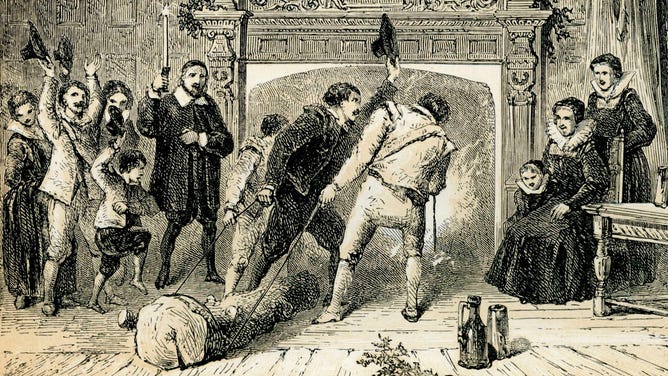
Two 19th-century men drag a yule log toward a fireplace on Christmas Eve.
(Culture Club / Getty Images)
It’s easy to see the appeal of spending time with loved ones around a warm, flickering yule log. But how exactly did this pagan tradition become part of the Christian holiday of Christmas, specifically?
The answer is a little complicated.
According to Sherman, the Vikings began converting from their traditional pagan belief system in the Norse gods to Christianity after it arrived in Scandinavia in the 11th century.
Because of the illiteracy of most Vikings and virtually all medieval Scandinavians, their traditions weren’t written down until the 13th century. By that time, Christianity had become so much more a part of Scandinavian culture.
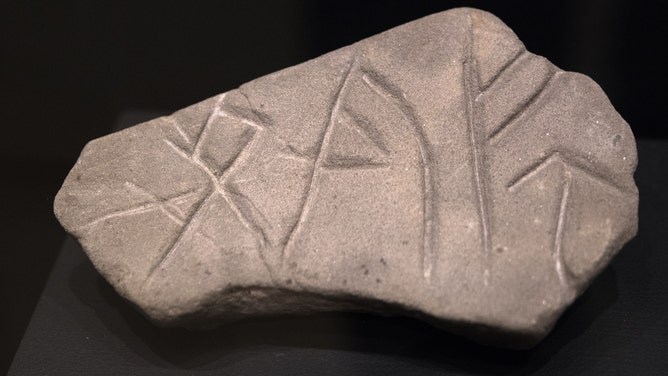
A whetstone with Viking rune carvings. While a select few in the Viking Age could read and write runic inscriptions, most Vikings could not and thus relied on oral traditions.
(Roberto Machado Noa / LightRocket / Getty Images)
"I think what happened is that the pagan tradition of the Vikings mixed in with the Christian traditions," Sherman said.
For instance, the belief that the yule log burned for 12 days may have been influenced by the Biblical story of the three wise men, who visited the newborn Jesus Christ in Bethlehem 12 days after he was born.
Comfort and joy
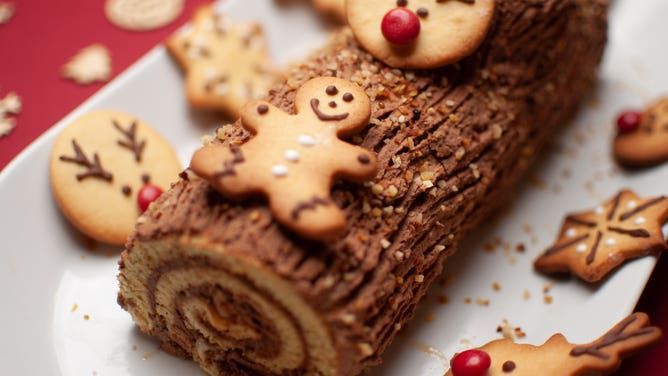
A chocolate yule log cake adorned with cookies shaped like gingerbread men, snowflakes and reindeer. Some families, especially those of Scandinavian descent, may make yule log cakes during the Christmas holiday season.
(Kisoulou / Unsplash)
Over a thousand years have passed since the Vikings’ pagan belief system was met with the Christian faith — and still, their tradition of yule logs continues to be a part of the Christmas holiday.
HOW ‘WHITE CHRISTMAS’ BECAME AN ICONIC HOLIDAY SONG
"They just really speak to this season," Sherman said.
"It just really evokes this, this feeling of coziness, togetherness with your family," she added. "And I think these traditions are just beautiful."
